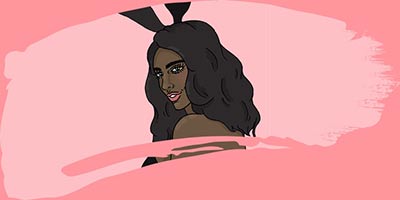flix •
‘To The Bone’ isn’t perfect, but it’s not the harmful glamorization people think it is
Let’s take a breath
When To The Bone premiered last week, I was reluctant to watch it. The cringe-worthy trailer, complete with The Wanted-esque sountrack and disorder-lite soundbites, made it look glossy, unrealistic, over the top. It made it look exactly what every critic was saying about it, a glamorous portrayal of an unglamorous illness. I was expecting to get irate, but I was just disappointed. Let’s be honest, To The Bone might not be a very good movie, it might not get it 100% right, but it’s hysterical and untrue to say its a fully unrealistic, glamorous portrait of anorexia.
Yes, To The Bone may be considered irresponsible with Ellen’s smoking, fashionable, Nicole Richie-esque performance. Yes, her rail-thin figure, complete with baggy jumpers and oversized sunglasses is “glamorous” at first, but doesn’t that unravel when you see her bruised spine and lanugo covered skin?
The film doesn’t tie things up in a neat little bow; we don’t know what will happen to Ellen, whether she’ll remain in recovery or relapse. We don’t know what damage she’s done. That uncertainty is, for many suffers, sadly realistic too.
Lily Collins — and director Marti Noxon — have both suffered from anorexia. In the midst of all the accusations and criticism, Lily said: “The script was eerily similar to a lot of things I’d experienced. To do this project with someone who had also gone through these experiences made it the most safe environment to do it.”
To prepare for the role, she met with Anorexics Anonymous groups and spent time in treatment centers. She didn’t just show up, replete with goth-chic wardrobe and one-liners, ready to give a pro-ana-ready, lackluster performance.
Let’s not pretend this film stands alone as the archetype of fiction that can be sadly manipulated to look “pro-ana.” Other things exist which are as influential, as potentially harmful as To The Bone — they always have. While pearl-clutching articles on the news that girls in pro-ana forums are recommending the film to each other might shock some people, it’s sadly not a new phenomenon. For years, sick girls who have found each other in internet communities have also managed to find art which reflects their own reality.
If you’ve ever been sick, even if you’ve ever been sucked into the dark internet culture around being sick, the moral panic over obsession over To The Bone is nothing new. Internet effigies to Daisy Randone and Janet, the bulimic and anorexic characters from Girl, Interrupted, have existed for years. In one scene. Winona Ryder recoils, “Jesus, look at Janet” while watching chain-smoking, bone-thin Janet walk on snow without leaving a dent. It was meant to be a throwaway reference to her illness but inevitably it was posted on Tumblr, black and white and tagged “thinspiration.”
Entire YouTube accounts exist dedicated to repurposing songs as “pro-ana/mia music” where the lyrics to Manic Street Preachers’ 4st 7lb or Pulp’s Anorexic Beauty or Jill Sobule’s Lucy at the Gym are there for you to learn. Poor, misunderstood Cassie Ainsworth is idolized.
Kate Moss, in all her heroin-chic Calvin Klein ad glory, is still considered a bonafide deity.
Look, this isn’t to say To The Bone isn’t without fault. It’s true that it doesn’t show living with an eating disorder in a gritty, realistic way — plenty of people have pointed out how incongruous it is to make a disease look like a neat, glamorous, love story — but it’s not the incarnation of evil and bad taste that people are making it out to be. It’s depressingly true to learn that any attempt at a cautionary tale can be twisted to be “thinspiration.” But let’s not pretend it’s new.
And yes, the film doesn’t avoid mentions of tips and tricks (while washing the dishes, two girls talk about what foods are easiest to purge and the rooms in the group home don’t have doors because otherwise they’d run laps around their bedrooms) but in that, it’s a realistic portrayal of sickness. If you’re obsessed with food and ways to restrict it, sadly you already know a lot of the “tips and tricks” the characters mention so casually to one another, sadly you know that Ellen’s obsession with placing her fingers around her arm to make it the size of a silver dollar is a realistic depiction, aleit a triggering one, of a repetitive intrusive thought, a ritual you do to make yourself feel okay.
It might not have been an arm, it might have been the ability to put your hands around your thigh without stretching, or the comfort you got from looping a forefinger and thumb around your wrist without touching the skin, because someone once mentioned in a misguided, offhand way that that’s how you judged thinness. But it probably seemed familiar.
A statement from eating disorder charity Beat said, “We know the media plays a big part in how eating disorders are perceived, influencing attitudes, beliefs and actions. The film makes clear that anorexia and other eating disorders are serious mental illnesses, and not a choice or about dieting or vanity.”
But they go on to add, “There is a strong likelihood that people who have been affected by eating disorders would find the film highly distressing or triggering.”
Ellen’s artwork made a girl kill herself. That’s the crux of one of the main plotlines of To The Bone (and a spoiler, sorry). Well at least she thinks it made a girl kill herself. She drew what she knew — her illness — and someone saw it online and instead of using it to feel less alone, or maybe even to heal, she saw it differently. And it was dangerous. Most of the characters in To The Bone spend a lot of time trying to convince Ellen that that’s not her fault, that art can be interpreted in different ways and that the idea that some people see it as dangerous shouldn’t stop you putting it out into the world.
Which is weird, because that’s what people have spent the past week howling into the void of the internet about To The Bone. That it’s wrong, that it’s glamorizing anorexia, that it’s dangerous. Because some people see the most extreme reaction to it as the rule, we all feel like we have to go along with it. But to accuse To The Bone of being dangerous and bad is to reduce the problem to one dissenting voice, one example of how we talk about creativity and mental illness, one more thing, like 13 Reasons Why before it, that we panic and tell everyone to not watch — just in case.
Anorexia exists within its own world, a secretive, often disgusting world that because of a lack of understanding and education, we’ve sadly never even properly talked about, or seen on screen. It was never gonna go right first try — and look, yeah, some parts of the film (like her manic pixie dream boy love interest), are frankly just fucking excruciating to watch. But in creating To The Bone, the first proper, feature-length film which even tries to address it, we’re learning how to properly tell eating disorder stories.
Maybe we’re not talking about it in the right way yet, but at least we’re talking about it.











 2017 - 2024 Tab Media
2017 - 2024 Tab Media